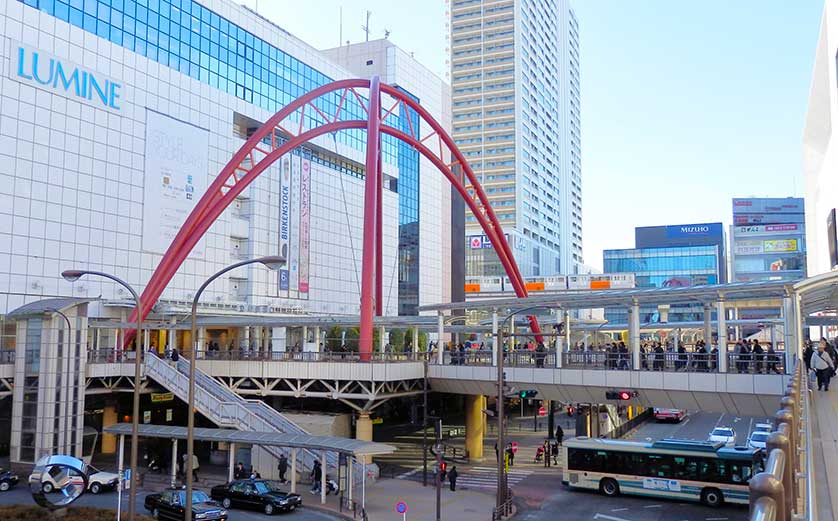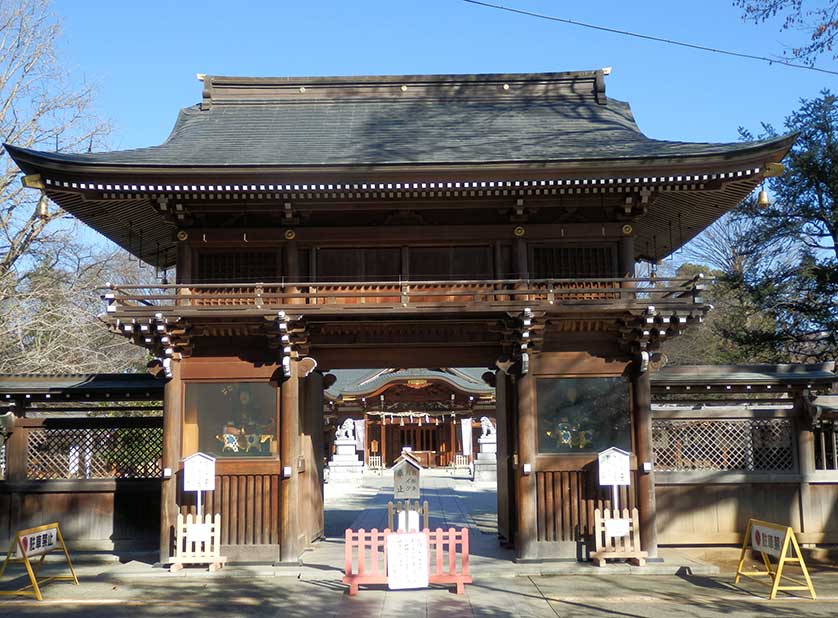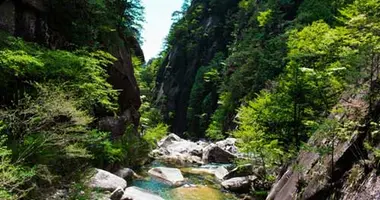Discover Tachikawa: A vibrant city on Tokyo's western edge

Tachikawa is a city of 180,000 located on the western outskirts of Tokyo. It serves as a major transportation hub with connections to central Tokyo, western Tokyo mountains, and Kanagawa to the south. Tachikawa is a bustling commercial center with department stores, restaurants and shops rivaling parts of central Tokyo. The city also has significant industrial and research facilities and large public green spaces.
Getting to and around Tachikawa
Tachikawa is easily accessible from central Tokyo via the JR Chuo Main Line, with rapid trains from Tokyo Stationtaking just 40 minutes. From Tachikawa Station, the Ome Line provides access to the mountainous Okutama region while the Nambu Line heads south towards Kanagawa Prefecture.
Within Tachikawa, the Tama Toshi Monorail runs north-south connecting the main station area with residential neighborhoods and large parks. Local buses and taxis also serve the area, but central Tachikawa is compact and walkable.
Tachikawa Station area - The vibrant heart of the city
The area around Tachikawa Station is the commercial and transportation heart of the city. Several large department stores including Isetan and Takashimaya rise above the station, while shopping centers like Lumine and Grandue spread out underground and in the surrounding blocks.
The pedestrian decks and walkways connecting the stores are always busy with shoppers and commuters. The dense cluster of shops, restaurants, karaoke parlors and bars surrounding the station stays lively well into the night. With the Tama Toshi Monorail and frequent buses also converging here, the area has a decidedly urban, almost futuristic atmosphere that contrasts with Tachikawa's location on the edge of Tokyo.

Tama Toshi Monorail train in Tachikawa, Tokyo
Shopping, dining and entertainment options in Tachikawa
Tachikawa offers a huge range of shopping, from fashion and electronics to home furnishings. Department stores like Isetan and Takashimaya carry high-end domestic and international brands. Lumine and Grandue focus more on trendy youth fashion and variety goods.
The popular Scandinavian retailer IKEA has a large store near Showa Kinen Park that also draws many visitors. LaLaport Tachikawa Tachihi, located next to Tachihi Station on the Tama Monorail Line, is a massive shopping mall with over 250 stores plus a food court, cinema complex and even medical clinics.
In terms of dining, Tachikawa has everything from cheap and cheerful izakaya pubs to high-end sushi. The lively, retro-style Takashimaya Yokocho on the 10th floor of Takashimaya department store offers a fun collection of small counter restaurants and bars. Craft beer fans can find a good selection of Japanese and imported microbrews at Berg, a cozy bar a short walk from the station.
Showa Memorial Park - Tokyo's largest park on Tachikawa's doorstep
Tachikawa's most famous attraction is Showa Kinen Park, an enormous public park spanning 1.65 square kilometers. Opened in 1983 on the former site of a US military airfield, Showa Kinen Park offers a mix of manicured Japanese and European style gardens, forests, seasonal flower fields, and open lawns.
The park's cycling course lets visitors pedal through the varied landscapes, while athletic fields, a swimming pool, and children's playgrounds provide more active recreation. In spring, the park is one of Tokyo's top spots for cherry blossom viewing, while autumn brings vivid foliage to its ginkgo tree avenues and Japanese garden.
Near the park's Tachikawa entrance stands a branch of the famous Swedish home furnishings store IKEA, the National Institute of Polar Research's museum, and the Emperor Showa Memorial Museum, which displays personal effects of the late emperor.

Showa Kinen Park in winter, Tachikawa, Tokyo
Exploring Tachikawa's history at Suwa Shrine and Fusai Temple
Although mostly a modern city, Tachikawa does have a couple of historic sites of note. Suwa Shrine was founded in the year 811 as a branch shrine of the famous Suwa Taisha in Nagano Prefecture. Set in a grove of old trees a 10-minute walk south of Tachikawa Station, the shrine grounds provide a tranquil escape from the city bustle.
Fusai Temple has its roots in the 14th century as a fortified Zen temple of the Tachikawa samurai clan. Most of the temple buildings burned down in 1995 and were rebuilt in a contemporary style, but the imposing main gate survived. A huge stone lantern, instead of the usual two, stands at the entrance.
South of these two sites flows the small Zambori River lined with cherry trees, making for a pleasant stroll in spring. The river is crossed by the Tama Monorail, and the stretch near Shibasaki-Taiikukan Station is a popular cherry blossom viewing spot with the monorail trains sliding by.

Suwa Shrine, Tachikawa, Tokyo
Tachikawa's role as an aviation and technology center
Tachikawa's development into a modern city is closely linked with the establishment of Tachikawa Airfield in 1922. From 1929 to 1933, it served as Tokyo's first civil international airport with flights to Osaka, Seoul, and Dalian. During WWII it was a military base and aircraft manufacturing site, which made it a target for US bombing raids.
After the war, the US military took over the base as a transport hub. It was returned to Japan in 1977, with some of the land being used to create Showa Kinen Park and other public facilities. Part of the airfield is still used by the Japan Air Self-Defense Force.
The Tachikawa Aircraft Company, founded in 1924, was a major manufacturer of military planes in the 1930s-40s. After the war, many of its engineers went on to work in the Japanese auto industry. The company eventually shifted to real estate, electronics and auto parts. This history of aviation and manufacturing has shaped Tachikawa into a hub for industry and research institutes.
Using Tachikawa as a base to explore mountains, rivers and beaches of western Tokyo
Tachikawa's excellent transportation links make it a convenient base for exploring the natural and historical attractions of western Tokyo and beyond. Okutama, a rugged mountain town in far western Tokyo, is just an hour away on the JR Ome Line. Popular for hiking, river sports and onsen, it's a paradise for nature lovers.
The Chuo Line provides quick access to the Mount Takao area, a popular hiking spot, as well as Ome, Kofu, and Matsumoto in the Yamanashi and Nagano mountains. Heading the opposite direction, Tachikawa is about 1 hour from Enoshima Island's beaches in Kanagawa Prefecture via the Nambu Line.
Whether as a day trip from central Tokyo or a destination in itself, Tachikawa offers a fascinating mix of modern urban amenities, natural beauty, and historical sites. With so much to see and do, it's well worth adding to any Tokyo-area itinerary.

Tamagawa Josui near Tamagawajosui Station
Tachikawa Tourist Information Corner
The Tachikawa Tourist Information Corner has a useful tourist map of the city available for free.
Tel: 042 527 2700
Website in Japanese and English: http://www.city.tachikawa.lg.jp/ An English-language PDF file tourist map can be downloaded here.
Tachikawa Accommodation
Tachikawa has a number of hotels to stay, mostly 3 star business hotels grouped around Tachikawa Station. All have similar facilities such as free WiFi, toiletries and flat screen TV in a similar price range. Check Tachikawa Accommodation listings for details.
Tachikawa Access
Tachikawa Station is served by the JR Chuo Main Line. Rapid trains run from Tokyo Station (40 minutes) or Shinjuku Station (25 minutes). See Tachikawa Access for details.
Map of Tachikawa
Get the most out of your trip with:






























